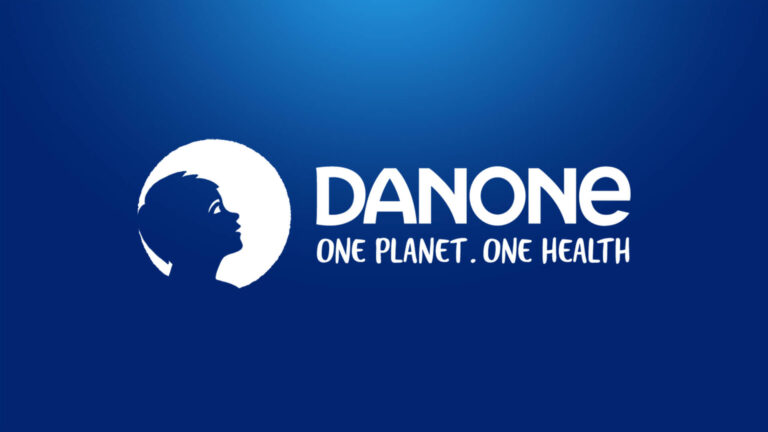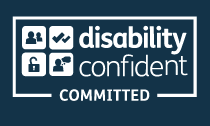The UK is the world’s fourth-largest e-commerce market, with a predicted market revenue of around £135 million in 2023. At 24.7%, the clothing sector has the highest share of online sales. But successful clothing brands must understand that achieving retail success online isn’t as simple as showcasing merchandise on a transactional website and watching the revenue roll in.
Why? The fact is, 1 in 5 UK residents have a disability which makes shopping on e-commerce web browsers either difficult or impossible. However, evolving buyer expectations and behaviours also play a role, because there’s an increasingly ethical element to the fashion industry that didn’t emerge until recently.
Here’s everything you need to know…
The Digitisation of the Fashion Industry
While some consumers still browse for clothes in high street stores, market research shows that over 60% of buyer journeys now start online, and at least 75% of consumers shop online at least once a month.
The online fashion industry has boomed in popularity because it’s a fast, easy, and convenient way for people to update their wardrobes all year round without having to go anywhere near the high street. Consumer benefits include:
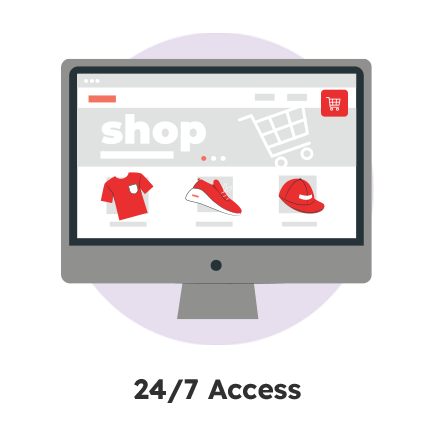




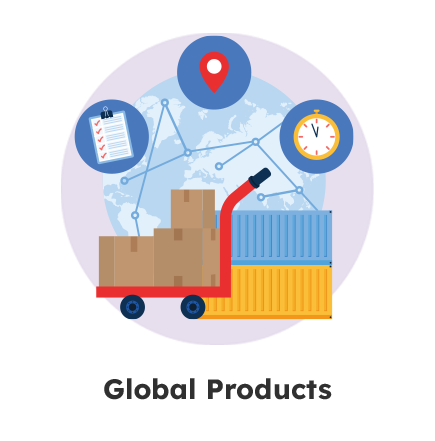
24/7 Access
Online shopping fits into people’s lives outside of 9-to-5 business hours.
Easy Price Comparisons
Consumers can easily flick between competitor websites to find the best deals.
Special Deals
Many retailers offer ‘online only’ sales to attract new customers and clear stock.
Extensive Choice
Drop shipping warehouses can store a more comprehensive range of stock than high street retailers.
Free Shipping
Free shipping deals save consumers money on transport and parking fees, etc.
Global Products
Online shoppers can access products from all over the world.
If you’re an online retailer, you might be thinking this is good news. After all, online fashion stores are cost-effective and require fewer resources to run than brick-and-mortar shops. But it’s not that simple. To gain and maintain market share, successful brands must also win the loyalty of increasingly ethically-minded shoppers.
Changing Attitudes Towards Inclusion in the Fashion Industry
Today’s consumers want to buy from brands with a mission. They expect the companies they buy from to care about others and be inclusive and sustainable in their business practices.
In recent years, there has been a pronounced shift towards promoting diversity on catwalks and in fashion magazines. It’s now more common than ever to see models of different sizes, ethnicities, and physical attributes. Some leading brands have even made entire marketing campaigns centred around the fact that they’ve stopped airbrushing their marketing images. A mere decade ago, none of this would have been possible.
The societal mindset towards inclusion crosses the boundary from the physical world into the online realm. To be successful in e-commerce, fashion brands need to embrace online inclusion and build accessible websites that allow equitable opportunities for everyone.
There are even brands that have made this their sole purpose for existence. For example, the disability-led e-commerce platform Adaptista specialises in offering beauty and lifestyle products for plus-sized and disabled people.
Why Online Inclusion is Essential for Fashion Brands
Having an accessible website demonstrates your brand’s commitment to providing exceptional service from the very first customer touchpoint. So, first and foremost, it’s the right thing to do. But of course, there’s more to it than that.
Revenue
There’s a significant financial incentive to become inclusive because the spending power of people with online access needs is £24.8 billion – around 15% of the UK’s total online spending. A digital marketing strategy that provides inclusive customer journeys is therefore essential, because:
- 82% of users with access needs would spend more if there were fewer barriers (ClickAwayPound).
- 85% limit their shopping to websites they know are accessible (ClickAwayPound).
- 75% of disabled people and their families have walked away from a business because of poor accessibility or customer service (We Are Purple).
Brand Association
Improving your website’s accessibility score presents an excellent opportunity to generate positive PR in a world where customers are increasingly value-driven. Modern-day consumers are becoming more and more socially conscious in their purchasing habits, with Forbes reporting that 52% of online consumers consider a company’s values when making a purchase. Companies that actively promote inclusivity have an opportunity to forge a more positive brand identity.
Market Leadership
The online market is becoming increasingly competitive, and there are now over 6 million online stores on Shopify alone. Yet, research shows that less than 10% of businesses have a targeted plan to access the disability market. Brands that prioritise accessibility and inclusion on their website ahead of competitors have an opportunity to capture the market, gain more customers, and earn themselves a reputation as a market leader.
Which Customers Face Online Access Barriers?
Whether people can access the information they need and make purchases online depends on whether they can see, understand, and navigate your website. There are several reasons that consumers may struggle, including:
- Visual impairments such as poor eyesight, deafblindness, and colour blindness.
- Learning difficulties like dyslexia, hyperlexia, and dyspraxia.
- Neurodevelopment and neurological conditions like ADHD, autism, and epilepsy.
- Mobility and physical impairments.
- Speaking/reading English as a second language.

What is an Online Access Barrier?
Online access barriers occur whenever an element of a website’s design or presentation makes it difficult to read or interact with the content. Users usually struggle for one of four main reasons:
Reading barriers
Including unsuitable font choice, text size, or the colour contrast between text and background on your web page.
Comprehension barriers
The pages don’t flow logically when web copy uses overly complex language or terminology or when alt text and link descriptions are missing.
Navigation barriers
Website errors like empty links and buttons, missing input labels on forms, and missing document language often make keyboard navigation impossible.
Trust barriers
Flashing images, visual media, or distracting image carousels affect focus and can act as triggers for seizures.
Accessibility Barriers on Fashion Websites
Here are a few of the most common barriers to accessibility found on online fashion websites.

Cluttered websites
Pages with multiple sliders and pop-ups can be difficult to navigate using a keyboard for shoppers who can’t use a regular mouse or trackpad.
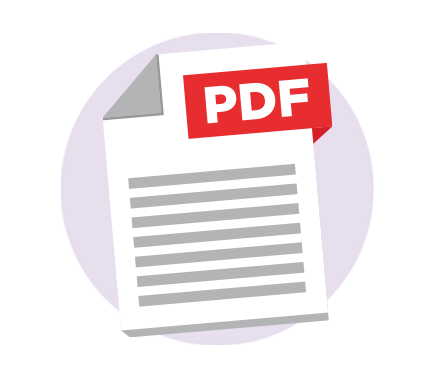
Size charts
PDF and image-based size charts seldom work correctly with screen readers. Often, shoppers can hear some or all of the elements of the chart, but in a random order that makes little sense.
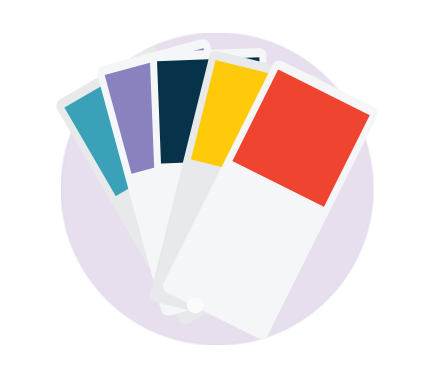
Swatches
Without labels or descriptive text, shoppers with vision deficits can’t differentiate between options on colour picker charts.
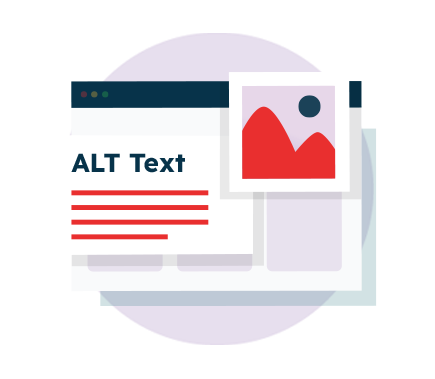
Alt Text Descriptions
Bland item descriptions like ‘blue shirt’ don’t provide content. Shoppers need extra details about the style, cut, pattern, etc.
3 Ways to Create an Accessible Website
The technology of consumer engagement is changing, and fashion brands must be proactive in removing online barriers that prevent customers from researching, browsing, and buying online. To maximise inclusion and meet your organisational goals for growth, having an accessible website is a must.
So, how do you go about making your brand’s website accessible?
1. Familiarise Yourself with the Web Content Accessibility Guidelines
The web accessibility guidelines are in place to help you make your website more accessible. The Web Content Accessibility Guidelines (WCAG)are the gold standard, and level AA is typically the minimum reference point when discussing ‘making a website accessible.’
2. Comply with National and Local Web Accessibility Legislation
Web accessibility legislation in the UK falls under the Equality Act of 2010. Under the Equality Act, companies must make reasonable adjustments to make websites more inclusive and ensure disabled website visitors are not treated less favourably online.
3. Invest in Assistive Technology
A proven way of supporting people online is by utilising assistive technology. Embedding accessibility software on your website allows you to support a diverse range of users by providing tools that enable them to create fully customisable online experiences.
How Recite Me Can Help
Recite Me’s innovative suite of accessibility on-demand tools makes websites accessible and inclusive for a diverse range of people:
The Recite Me Accessibility Checker audits back-end and front-end web development processes by running 396 separate compliance scans in line with WCAG 2.1 and breaking down the issues on your web pages you should be working to fix.
The Recite Me Accesibility Toolbar promotes inclusivity by allowing end users with low vision, cognitive impairments, learning difficulties, physical disabilities, and varying abilities.
We’re proud to announce that the British Fashion Council is breaking down digital barriers for their website visitors by providing Recite Me language and accessibility tools.

“The BFC understands the differences of our diverse population and is fully committed to eliminating unfair or unlawful discrimination. We are delighted to be working with Recite Me to ensure the information distributed on our website is accessible to everyone. Recite Me’s web accessibility software allows us to provide all users with the opportunity to navigate the site in a way that works best for them, complimenting the subtitled video content across our social and digital ecosystem.”
Caroline Rush, CEO, The British Fashion Council
Improved Accessibility Backed by Real-World Data
Thousands of organisations using Recite Me technology are already benefitting from their investment. Results from our 2022 annual report show that during the previous 12 months:
- The Recite Me toolbar was active on over 5000 websites
- Individual toolbar usage increased by 59% to over 5.5 million users.
- We made 34.4 million pages of web content inclusive.
- On average, Recite Me toolbar users viewed 6.33 web pages per session – more than double the internet average of 2.8 pages per session.
Make Your Fashion Website Inclusive Today
Our team is here to help you on your mission to provide more inclusive online experiences. Get started on your online inclusion strategy today by working through these action points:
- Contact our team for more advice about WCAG standards and the web accessibility legislation that applies to your organisation.
- Find out more about the Recite Me Web Accessibility Checker.
- Schedule a free demonstration to learn how our technology can help you.
- Run a free check of your website for WCAG 2.1 AA compliance.
- Find out more about the Recite Me Toolbar.
Try our toolbar or schedule a free demonstration to see the difference it can make to your customers, clients, and employees.
Download our Quick Guide for Inclusive Fashion and Retail Websites
Take the first step in your digital inclusion journey by downloading our flyer which is packed full of useful information about creates inclusive fashion and retail websites. It includes:
- Digital inclusion facts and statistics
- The top 3 reasons you should support your website visitors
- How you can get started
- Fashion brands leading the way




